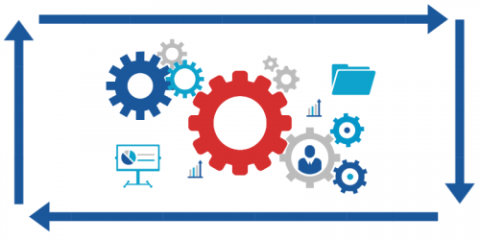
What is Operational Risk Management?
Operational risk management (ORM) is a process that helps organizations identify and manage potential risks so that they can avoid potential disasters. It simplifies the process of dealing with operational risks in any situation.
Benefits of Operational Risk Management
- Prevention and minimization of the financial cost of operational losses.
- Increase the reliability of commercial operations.
- Strengthen decision-making when risks are present.
- Reduced losses due to poorly identified risks.
- Improve effective risk management operations.
- Reduce compliance costs.
- Reduced potential harm from future risks.
Types of ORM
People Risk- Risk is the potential for adverse financial losses and social performance due to deficiencies in human capital and human resource management. An inability to manage and maintain skilled resources often leads to human error, fraud, or other unethical behavior.
Process Risk- Process risk is a subset of operational risk that deals with the potential for disruption or failure of a process or system. When an organization's processes are ineffective and inefficient, it can lead to financial, customer, and reputation loss.
Systems risk - System risk is related to the failure of an internal system and refers to the risk of failure of the entire system, not just the failure of individual components. This includes cross-industry communications, management information and basic banking systems, and other technical systems.
External events risk - The risk of external events occurs as a result of external events, including accidents, industrial accidents, such as fires and explosions, natural disasters, and human-caused events such as civil unrest, war, robberies, and terrorist attacks.
Legal and compliance risk - Legal and compliance risk arises when your organization fails to comply with internal and external laws and regulations. It refers to any case in which a company does not comply with microfinance regulations, anti-money laundering requirements, tax laws, and other regulations.
Framework / Process of Operational Risk Management
Risk Identification – Risk identification is the first and most important step that will take you towards mitigating its impact.
Risk Assessment - The next step is to evaluate all the risks you have identified. The result of the risk evaluation is a priority list of known risks.
Risk Mitigation - Once you have identified the risks, you need to look for solutions to measure their impact and mitigate or eliminate them.
Control Implementation - The next step is implementation, you should keep an eye on the system and be prepared to address any risks as soon as they arise. If something goes wrong, you need to be able to fix it fast.
Monitoring - Monitoring involves verifying that control is relevant to the design, implementation, and operational effectiveness.
Conclusion
In recent years, technological development has had a profound impact on operational risks. The evolution of the financial services industry has led to an increase in operational risks in several areas. Thus, Operational Risk Management will continue to play a vital role in identifying potential risks to keep the company well prepared in the event of unplanned events.
